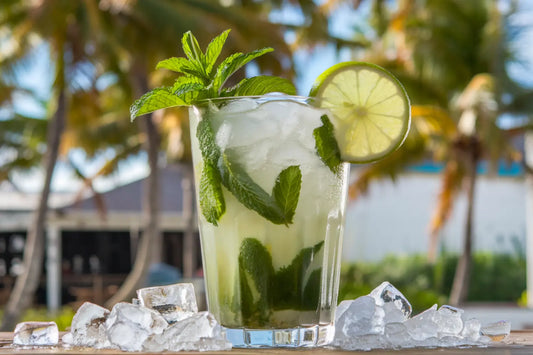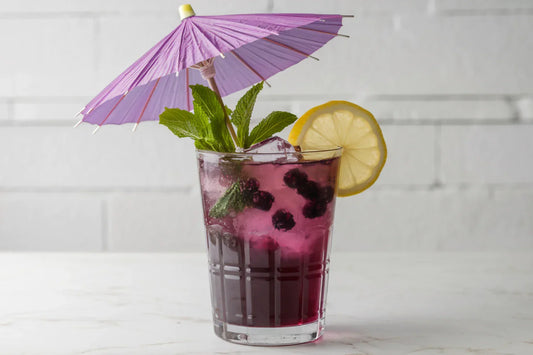What Is a Bar Spoon? Essential Tool for Every Bartender
BarNeedThe bar spoon is an essential tool for every bartender. It may seem simple, but it plays an indispensable role when making drinks. Whether it's stirring or creating layered cocktails, it helps you get the job done effortlessly.
You might be wondering, "What’s the difference between it and a regular spoon?" "Can I use any spoon instead?" If you're just starting to set up your home bar and are unsure about whether to get a bar spoon, congratulations—you’ve come to the right place! In this blog, we’ll share everything you need to know about the bar spoon’s function, features, history, and how to use it. We’ll explain why it’s a must-have tool for all bartenders.
Jump to:
What is a Bar Spoon?
A bar spoon is a common bartending tool primarily used for stirring drinks. Typically made of stainless steel, its most notable feature is the long, twisted handle, which is one of the key differences between a bar spoon and a regular spoon. Here are its key features and functions:
- Long Handle: Bar spoons typically range from 10 inches (25 cm) to 14 inches (35 cm) in length. The longer length allows for easier use in deeper containers like mixing glasses and cocktail shakers, offering better control and reducing wrist strain from excessive movement.
- Twisted Handle: The twisted design makes it easy to grip and prevents it from slipping out of your hand. It also helps achieve a smooth, even mix while stirring. This structure is also ideal for layering cocktails. When pouring liquids down the handle, the twist controls the flow, helping maintain distinct layers with different densities and colors.
- Versatility: Many bar spoons feature additional functional designs at the end. For example, a flat end can be used to muddle fruits or herbs, releasing their aromas. A forked end is useful for picking up garnishes like fruit or snacks.
Due to these features, a bar spoon is the ideal tool when making cocktails that require stirring rather than shaking, such as martinis, Manhattans, and Negronis. It helps mix ingredients evenly and creates a well-balanced, smooth taste.
So whether you're a professional bartender, a home bartender, or a beginner, a bar spoon is an essential tool in your bartending kit—something no regular spoon can replace.

History and Origins
The bar spoon's history is not as well-known or dramatic. According to cocktail historian David Wondrich in his 2007 book Imbibe!, during the late 19th and early 20th centuries, as cocktail culture was rapidly growing, bartenders began using long-handled tools to stir and mix alcohol with other ingredients, which eventually led to the creation of the bar spoon.
As bar culture evolved and cocktails became more complex, bartenders' need for specialized tools also grew. This helped the bar spoon evolve into the more efficient and user-friendly design we know today, making it a standard tool in bars around the world.
By the 21st century, the bar spoon’s functionality had been refined, but its appearance also became more sophisticated. In addition to the classic stainless steel silver design, bar spoons are now available in gold, copper, black, and other finishes, giving bartenders a variety of personalized options to reflect their style and professionalism.
How to Use a Bar Spoon
The most common use of a bar spoon is to stir drinks, ensuring the ingredients are well-mixed while also chilling them with the help of ice. To use it effectively, keep the following tips:
- Position: Insert the spoon close to the wall of the glass. This position helps create an even whirlpool effect as you stir, ensuring that the ice isn't constantly bumping into the spoon.
- Grip: Hold the bar spoon near the end of the handle. This grip allows you to easily control the speed and movement of the stirring.
- Motion: When stirring, rely on your wrist movement rather than using your whole arm. This helps you maintain flexibility in controlling the speed and force of the stir, preventing arm fatigue.
- Force: Avoid using excessive force, as this can cause the ice to melt too quickly, diluting the drink and affecting the flavor. If you're working with soda water, too much force can also cause the bubbles to dissipate faster, which is something you want to avoid.
- Time: Stir for about 15 to 30 seconds. This allows enough time to fully mix the ingredients, while also achieving a slight chill and dilution, which is often desirable for many cocktails.
In addition to stirring, when making layered cocktails, there are a few additional techniques you need to master:
- Angle: Hold the bar spoon so that it’s positioned vertically just above the lower layer of liquid. This allows the poured liquid to flow slowly and smoothly down the twisted handle, maintaining the separation between layers.
- Distance: When pouring, make sure the container is in close contact with the bar spoon's handle to prevent drips and spills.
- Pouring Speed: Pour the liquid slowly and steadily. This helps prevent a fast flow that could cause the lower layers to mix, disrupting the intended layered effect.

Conclusion
A bar spoon is an essential tool for any bartender or cocktail enthusiast. It not only makes the drink-making process more efficient and convenient, but also ensures a balanced and smooth taste. After reading this guide, we hope you now have a comprehensive understanding of the bar spoon and its importance. If you're setting up your home bar, don't hesitate—it's a must-have tool.





